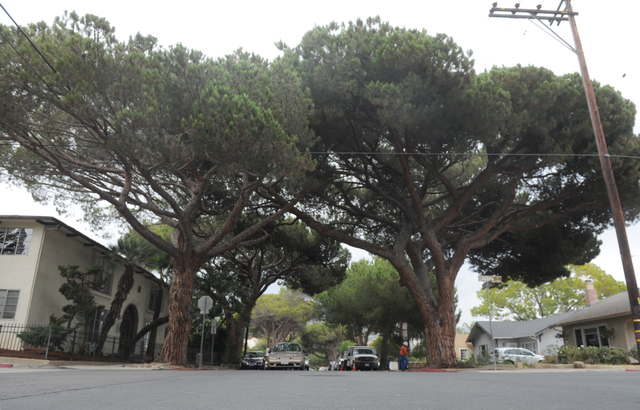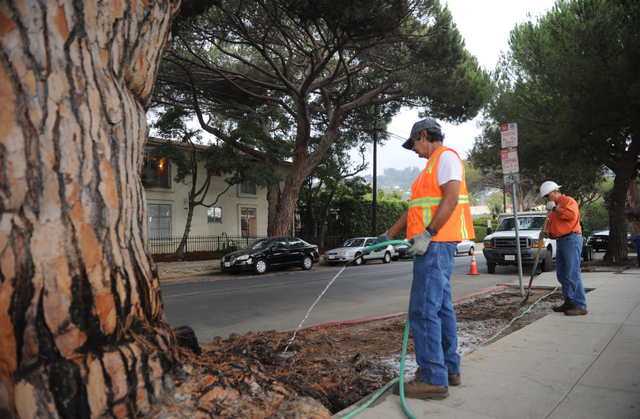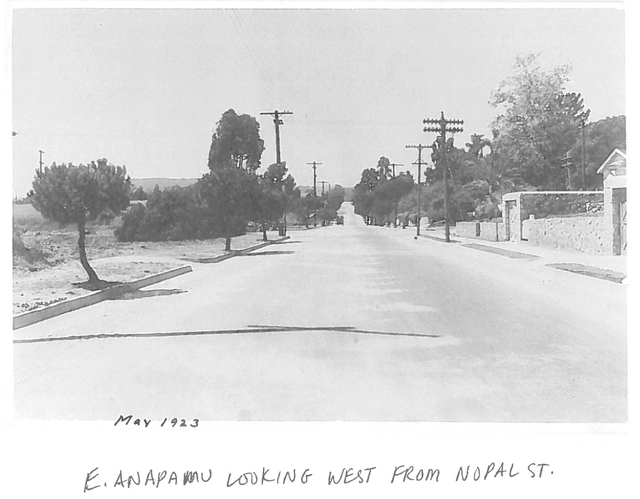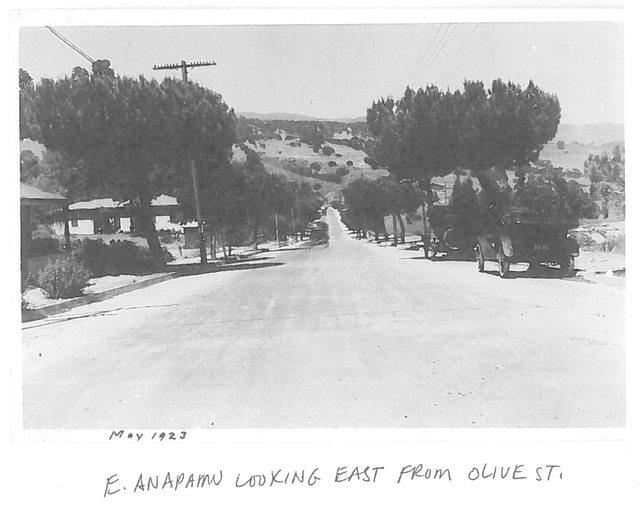Stone Pines Distressed by Drought
Four Have Died Along Anapamu Street With 12 More at Risk

The canopy of 90 historic stone pine trees that so dramatically define a five-block stretch of East Anapamu Street is currently under serious stress by the state’s prolonged drought. Four of the pines have died and will soon be removed. Another 12 are considered at risk, said Tim Downey, arborist for the City of Santa Barbara.
Before the drought, Downey said street crews watered the trees twice a year during summer months. In 2013, the frequency jumped to four times a year. Now it’s 12. Even that’s not enough, he said, and last week, volunteers working with his department reached out to residents living on both sides of the tree-lined street and asked that they irrigate their yards to provide more water for the trees.

The stone pine canopy is not just atmospherically compelling; it’s historic. The first of the stone pines were planted on East Anapamu before 1910 by the city’s first park superintendent, A. Boyd Doremus, who worked in consultation with Italian horticulturalist Francesco Franceschi, who cultivated the pine seeds and after whom Franceschi Park has been named. A second wave of stone pines was planted there between 1919 and 1921, bringing the total number to 79.
At that time, Downey said, Anapamu Street was a narrow dirt roadway with no paved sidewalks or other urban hardscapes to impede the growth and development of the trees. Over the years, the street was paved and sidewalks installed. As a result, the trees and their roots have had to struggle for turf. The buckled condition of the street and the sidewalks is evidence of the trees’ tenacity. But they’ve paid a price. Typically, Downey said, stone pines will live about 300 years. Under existing urbanized conditions, the life span is considerably less. He estimated most of the trees now standing have about 50 years if they can make it through the drought.

That’s becoming more of a big “if.” Without enough water, the stone pines can’t produce enough sap. And without the sap, there’s not enough pressure within the trees to keep bark beetles from boring in and laying their eggs. If the beetles manage to dig all the way around the circumference of a tree, they can effectively stop the flow of nutrients to the top, thus killing it.
The trick, said Downey, is getting enough water to the trees. Currently, his crews are hauling water via truck or tanker and inserting it into tubes that ideally would reach 30 inches below the surface. Given how dry the soil has become, Downey said, his crews are hard-pressed to get the tubes 18 inches down. That’s why he’s seeking cooperation from the neighbors.

The more neighbors who join in by irrigating more, Downey said, the better chances the trees have of surviving. Making this a tougher sell, the City Council just increased the water rates for all but necessary uses in order to encourage conservation. Downey said he hasn’t offered to pay the additional water bills of participating neighbors but said he might not have to. He said city water experts are ready, willing, and able to assess the residents’ current irrigation practices for possible improved efficiencies. To date, Downey said, two neighbors have indicated a willingness to participate, but he’s optimistic more will follow suit. “The volunteers just went out this week,” he said.
Although the stone pines are perhaps the most visually dramatic, they are hardly the only distressed trees within city limits. Downey said to date the drought has claimed as many as 40 trees.



